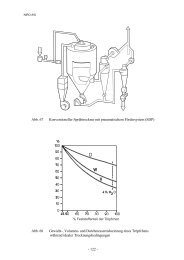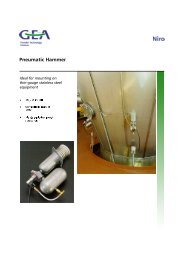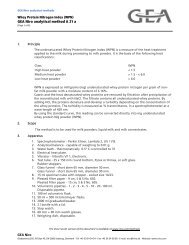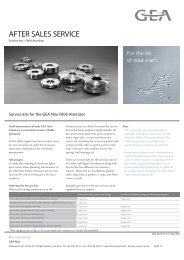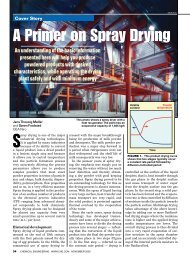41119_Niro jubilaeumsbog_blok_uk - GEA Niro
41119_Niro jubilaeumsbog_blok_uk - GEA Niro
41119_Niro jubilaeumsbog_blok_uk - GEA Niro
Create successful ePaper yourself
Turn your PDF publications into a flip-book with our unique Google optimized e-Paper software.
The coffee chronicle<br />
Around the world, more than a trillion cups of coffee are<br />
consumed every year. But how many people really know<br />
the story behind the popular drink?<br />
The word coffee gives many impressions and associations.<br />
A literature critic would probably think of Karen Blixen’s<br />
biographical novel Out of Africa, which has a coffee plantation<br />
as the setting for her tragic love story. A farmer would perhaps<br />
look at it as a very demanding and troublesome bush with a<br />
relatively expensive crop. And a <strong>Niro</strong> engineer would probably<br />
immediately think of big, rust-free production plants, in<br />
which one can turn green coffee beans into instant coffee.<br />
But what is coffee really? Coffee is a bush that originally<br />
grew in the highlands of the Horn of Africa and the Arabic<br />
peninsula. The coffee bush bears fruit (berries), each of<br />
which contains two stones or beans (normally called green<br />
beans). As the berries often are picked by very simple means,<br />
and the handling thereafter (where the flesh is removed from<br />
the green beans) often is very rough, the result is broken beans,<br />
which cannot be sold as grade A quality. These beans usually<br />
aren’t bad as far as taste goes, so instead of using the beans<br />
as fuel, there’s the possibility of using them and increasing<br />
their value by producing instant coffee. In this way, coffee<br />
farmers also get the full benefit of their crop.<br />
48 | 49<br />
Coffee during the war<br />
Instant coffee has been known since 1909, but it wasn’t until<br />
the 1940s, during World War II, that larger amounts of instant<br />
coffee were produced and supplied to the American and<br />
English troops. Instant coffee was manufactured with very<br />
doubtful profitability and quality (both taste and appearance<br />
could have been much better), but it served the purpose of<br />
soldiers being able to get coffee quickly, and it didn’t take a<br />
lot of effort to make coffee on the front line.<br />
The first real industrial spray drying plant for the production<br />
of instant coffee of reasonable quality was built in the years<br />
1950-1952. <strong>Niro</strong> was at the forefront and among the pioneers<br />
in Brazil. In 1947, <strong>Niro</strong> was able to offer and design industrial<br />
plants and matching pilot tests with extraction and spray<br />
drying for the first time. The first big boom in deliveries of<br />
extraction and spray drying plants came in the 1960s. In<br />
1965, the first freeze-drying plants also were delivered, and<br />
the former Atlas freeze-drying division (which today is a<br />
completely integrated part of <strong>Niro</strong>), was the frontrunner.



